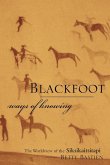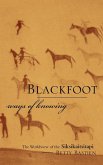In 1823, United States Supreme Court Chief Justice John Marshall, based on his analysis of custom, not precedential law, proclaimed the "Doctrine of Discovery" as the supreme law of the land in the case, Johnson v. M'Intosh. This "doctrine" held that whichever European nation first "discovered" land, then not ruled by a Christian prince or people, could claim ownership. From President Washington on it was a foregone conclusion that America's legacy was a continental empire. Indigenous people in this New World, as it was called, were a mere obstacle to be eliminated or moved out of the way of colonial settlers in their westward expansion from coast to coast. The Johnson case followed Chief Justice Marshall's earlier opinion in 1810 that states owned all of the land within their boundaries, regardless of whether it was inhabited by indigenous peoples. It led the southern states to sell indigenous land, pass legislation incorporating it into their counties and abrogate indigenous national sovereignty. The federal government faced the real threat of these southern states seceding from the union if their land-grabbing was thwarted. Transforming indigenous peoples to tenants on their land made it easier to breach solemn treaties the government had entered into with sovereign polities. It made it possible to acquire millions and millions of acres of land. What followed was the loss of indigenous lives, land, game and valuable natural resources, along with the federal government imposing brutal economic sanctions and destructive assimilation policies. Thus, the United States acquired an empire at fire sale, rock-bottom prices, or without compensation at all, facilitated by Chief Justice Marshall's decisions in two heinous, feigned cases.
Hinweis: Dieser Artikel kann nur an eine deutsche Lieferadresse ausgeliefert werden.
Hinweis: Dieser Artikel kann nur an eine deutsche Lieferadresse ausgeliefert werden.









